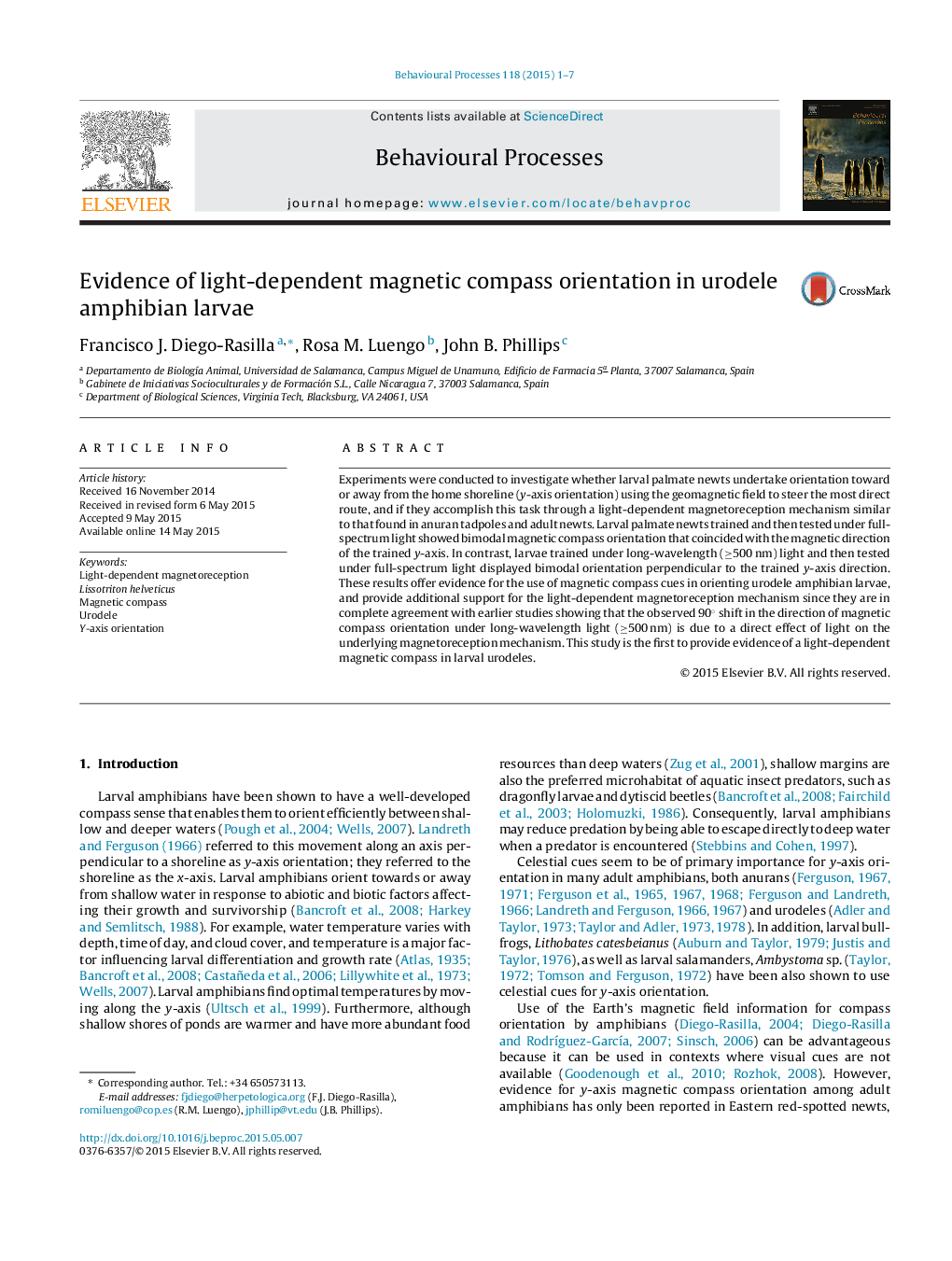| Article ID | Journal | Published Year | Pages | File Type |
|---|---|---|---|---|
| 2426563 | Behavioural Processes | 2015 | 7 Pages |
•Larval palmate newts are able of magnetic compass orientation.•We find a light-dependent shift in larval newts magnetic compass orientation.•Larval urodeles have a light-dependent magnetoreception mechanism.•We provide support for a light-dependent magnetic compass mechanism in amphibians.
Experiments were conducted to investigate whether larval palmate newts undertake orientation toward or away from the home shoreline (y-axis orientation) using the geomagnetic field to steer the most direct route, and if they accomplish this task through a light-dependent magnetoreception mechanism similar to that found in anuran tadpoles and adult newts. Larval palmate newts trained and then tested under full-spectrum light showed bimodal magnetic compass orientation that coincided with the magnetic direction of the trained y-axis. In contrast, larvae trained under long-wavelength (≥500 nm) light and then tested under full-spectrum light displayed bimodal orientation perpendicular to the trained y-axis direction. These results offer evidence for the use of magnetic compass cues in orienting urodele amphibian larvae, and provide additional support for the light-dependent magnetoreception mechanism since they are in complete agreement with earlier studies showing that the observed 90° shift in the direction of magnetic compass orientation under long-wavelength light (≥500 nm) is due to a direct effect of light on the underlying magnetoreception mechanism. This study is the first to provide evidence of a light-dependent magnetic compass in larval urodeles.
